
20 minute read
News
The UIC Barcelona School of Architecture is often a protagonist on the current national and international architectural scene, thanks to its teaching body, students and alumni. Exhibitions, projects and awards, lectures, interviews: all of this is reflected on a regular basis on the School’s website, which contains a selection of the most important news throughout the year.
Follow @ArchitectureUIC for daily updates: architecture.uic.es
Advertisement
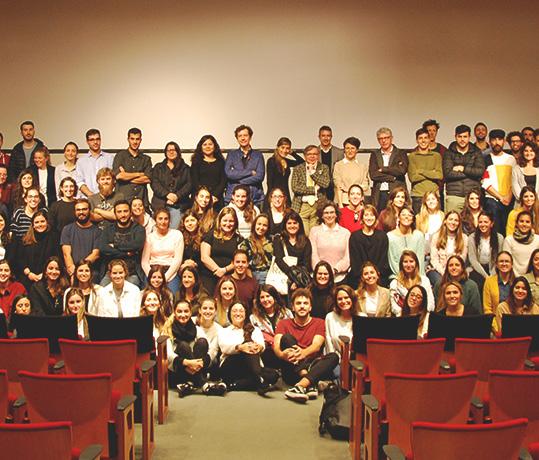
VISITING SCHOOL
The UIC Barcelona School of Architecture is visited by 185 architecture students from Uruguay On Monday 12 November, the UIC Barcelona School of Architecture was visited by 185 architecture students from the University of the Republic of Uruguay. For the visit, the School organised a conference titled “Architecture, city and territory. 21st century challenges”, which included participation from lecturers at the School and the director of Barcelona Regional, Josep Bohigas. In his institutional welcome speech, Josep Lluis i Ginovart, the director of UIC Barcelona School of Architecture, emphasised the importance of being able to establish a cultural dialogue with architecture schools in Latin America. “We hope that today’s conference will open a gateway between our two universities and we will look at the possibility of working together to build bridges between our postgraduate programmes and teacher and student exchange opportunities”, the director of the School said.
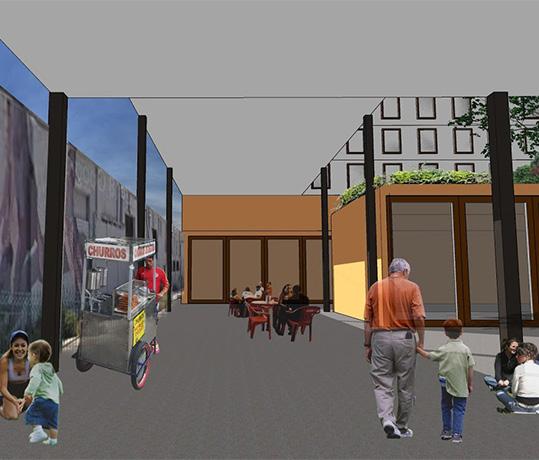
COOPERATION
UIC Barcelona works with Barcelona Ciutat Refugi to plan proposals for temporary refugee welcome centres
On Monday 18 February, an international workshop organised by the UIC Barcelona Master’s in International Cooperation: Sustainable Emergency Architecture was launched at the Pati Llimona Community Centre in the Ciutat Vella district, in collaboration with Barcelona City Council’s programme, Ciutat Refugi (Barcelona, Refuge City). The aim of the workshop is to provide students with two weeks to assess refugee welcome centres from several countries around the world. Following their analysis, they created their own proposals for reception centres, including accommodation and services for the sustainable integration of refugees in Barcelona. During the first week, master’s students joined another 40 students from the Mundus Urbano Master’s, a joint programme coordinated by four European universities: UIC Barcelona School of Architecture, Technische Universität Darmstadt (Germany), Université Pierre Mendès Grenoble (France) and Universitá Tor Vergata Roma (Italy). In total, 65 international students were involved in the initiative.
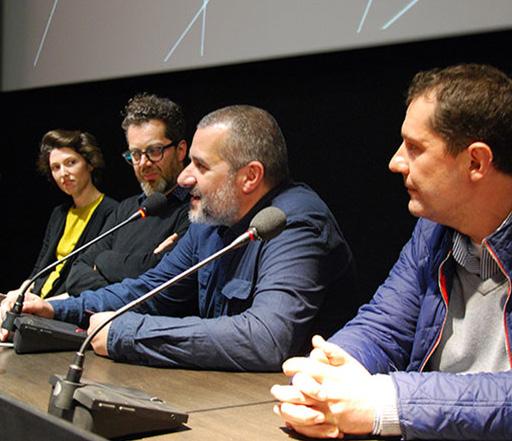
VIDEO ART
Bêka&Lemoine bring their work to the Filmoteca de Catalunya as part of the UIC Barcelona Foros lecture series
Video-artists Ila Bêka and Louise Lemoine took part in the UIC Barcelona School of Architecture Foros lecture series, in a session held at the Filmoteca de Catalunya. Bêka&Lemoine, whose work is characterised by its use of new audiovisual narratives to analyse contemporary architecture and urban settings, delivered a lecture titled “The Experience of Space”. Through excerpts from their 24 films, they revisited their vast filmography, recently purchased by the Museum of Modern Art in New York (MoMA). In the lecture, the video-artists explained how they got started in the world of cinema and discussed the process of producing their first film, Koolhaas Houselife (2013), which explores the daily routine of the cleaning lady at one of Dutch architect Rem Koolhass’ most iconic houses. The video-artists also referred to the lines of work that guide their productions. Following the lecture, attendees were treated to a screening of two of the chapters from: Homo Urbanus, a series that takes an in-depth look at urban life in seven cities around the world.

ANNIVERSARY
The University Master’s Degree in International Cooperation: Sustainable Emergency Architecture will celebrate the 10th anniversary On 29 May, the UIC Barcelona School of Architecture celebrated the 10th anniversary of the University Master’s Degree in International Cooperation: Sustainable Emergency Architecture. This academic programme, the first of its kind in the Spanish university system, is intended primarily for architects, urban planners, geographers and engineers and looks to train experts in the development, design and management of global cooperation and sustainable development projects. Since its launch ten years ago, 202 students from 58 countries around the world have taken this master’s degree. In the words of its director, Dr Carmen Mendoza Arroyo, “The value of this programme lies in the interdisciplinary approach we provide, which enables future professionals to gain experience in the reconstruction and development of communities afflicted by poverty, armed conflict or natural disasters, from an urban to an architectural scale”.

ART
The artist Cinta Vidal unveils a mural at UIC Barcelona
The rector of UIC Barcelona, Dr Xavier Gil, unveiled the work ‘Universitas’, painted by the artist Cinta Vidal, on the Barcelona Campus of the Universitat Internacional de Catalunya (UIC Barcelona). The project was carried out in two separate spaces at the university: the entrance gate on the Barcelona Campus and the front facade of the Aula Magna. The mural depicts the university as a space where knowledge is created, using a dynamic composition that plays with the perspective and gravity of the elements. The different disciplines taught at UIC Barcelona and education in general are portrayed, along with the diversity of the university community. The initiative was carried out in collaboration with the UIC Barcelona School of Architecture and is part of the UIC Barcelona project ‘Impars’, supporting contemporary art and promoting the talent of the creative community.
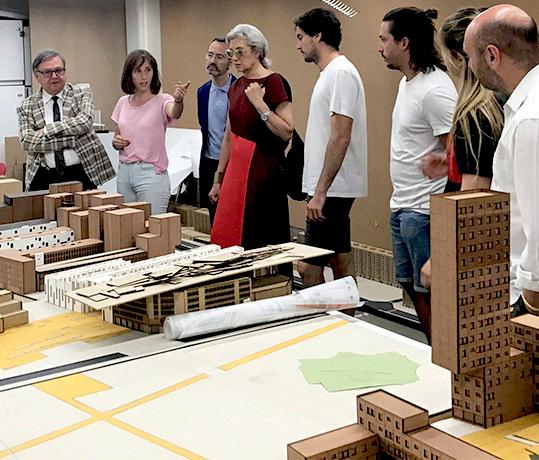
MEDAL OF HONOUR
Architect Carme Pinós visits the UIC Barcelona School of Architecture
Architect Carme Pinós visited the UIC Barcelona School of Architecture in the company of its director, Josep Lluis i Ginovart, and part of the School’s teaching staff: Guillem Carabí, Diego Navarro, Ana Cocho-Bermejo, Alberto T. Estévez and Marta García-Orte. During her tour of the School, Carme Pinós also stopped in to see the 5th-year architecture students’ Final Degree Projects and speak with the students.
Afterwards, Carme Pinós collected the 2019 Medal of Honour from the Vives University Network, a distinction awarded by 22 universities from Catalanspeaking territories, which acknowledges the recipients’ career achievements and commitment to science and culture. The award ceremony took place in the University’s Aula Magna and was presided by Xavier Gil, the rector of UIC Barcelona, in his role as president of the Vives Network during this past academic year.
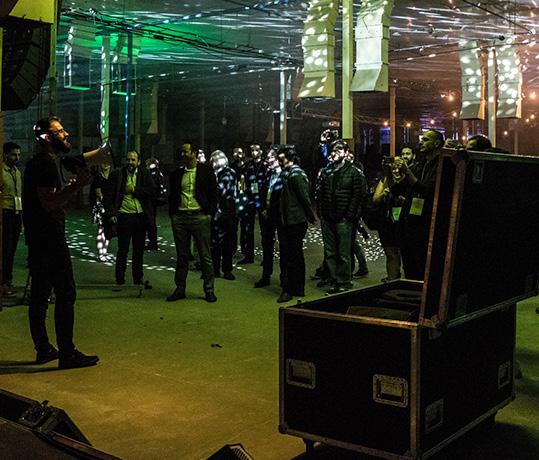
DIEGO NAVARRO
Dr Diego Navarro takes part in the 36th edition of the eCAADe conference held in Poland
Diego Navarro, lecturer at the UIC Barcelona School of Architecture, took part in the 36th edition of the international eCAADe conference (Education and research in Computer Aided Architectural Design in Europe). Navarro gave a speech on 20 September about smart cities, co-authored with Dr Ana CochoBermejo and PhD student Zeynep Birgonul. “Unilateral appropriation of the term ‘smart city’ for commercial purposes by industry may have a negative impact on a city, encouraging methods where non-academic agents have full control of the design of a city. This, in turn, leads to more complex issues, such as sociology, urban design or architectural synthesis being omitted”, Diego Navarro explained. In order to avoid these dangers, Diego Navarro made clear in his speech the need for city management to be steered by academia, creating interdisciplinary groups which will analyse, propose and theorise on the recent discipline of the ‘Science of Cities’.
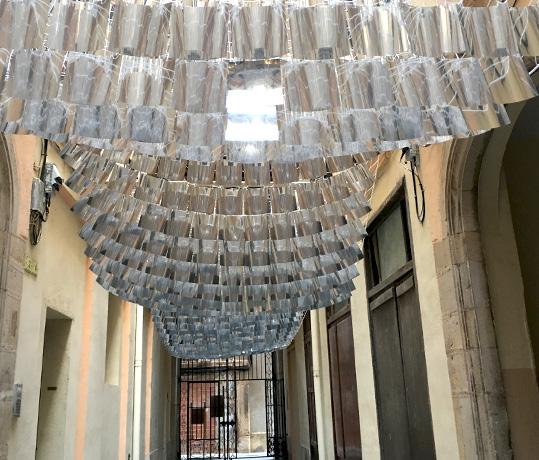
JELENA PROKOPLJEVIC
Lecturer Jelena Prokopljevic takes part as a jury member in the ‘A Cel Obert’ festival in Tortosa
The idea behind the event, which this year celebrated its 5th edition, is to turn Tortosa into an epicentre of creation, promote the city’s architectural heritage and bring ephemeral art to the public at large. To do so, various teams of artists, architects and designers worked to create ephemeral installations which sought to establish a dialogue between traditional architecture and contemporary art.
“The festival adds to Tortosa’s selection of cultural and tourism activities, opening the doors of its courtyards to the general public. Many of these spaces, all of which are steeped in history, are closed to public for the rest of the year. In this sense, the festival is a great chance to discover this cultural heritage, which is full of art”, stated Prokopljevic.

ANA COCHO-BERMEJO
Ana Cocho-Bermejo takes part in the EURAU congress Ana Cocho-Bermejo, lecturer at the UIC Barcelona School of Architecture, took part in the 9th edition of the European Research in Architecture and Urbanism (EURAU) congress, organised by the University of Alicante under the title “Retroactive Research: Architecture’s capacity to challenge and extend the limits of other disciplines”. As part of the congress, Ana Cocho presented a paper entitled “Urban Design vs. Science of Cities: From the Digital Gap to the Artificial Intelligence Barrier”, which she coauthored alongside fellow School lecturer Diego Navarro. During the presentation, Ana Cocho-Bermejo discussed the challenges that the implementation of artificial intelligence algorithms in city design poses for architects and urban designers. “By looking at the process of change from the digital gap to the artificial intelligence barrier, you see most projects are being led by small groups of researchers in Western countries. The studies performed thus far are based on individual samples that do not take into account factors such as age, race or social condition”, remarked Cocho-Bermejo.
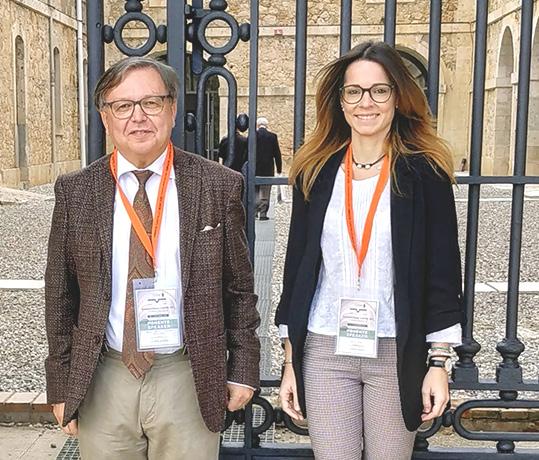
JOSEP LLUIS I GINOVART & MÓNICA LÓPEZ
Josep Lluis i Ginovart and Mónica López Piquer take part in the ICOFORT international conference 2018
The director of the UIC Barcelona School of Architecture, Josep Lluis i Ginovart, and lecturer Mónica López Piquer were conference speakers at the “International Scientific Committee on Fortifications and Military Heritage” (ICOFORT) organised by the Friends of Montjuïc Castle Association and the Spanish Ministry of Defence. The international conference took place between 14 and 17 November and was held in the iconic fortress of Castell de Sant Ferran near Figueres. Josep Lluis i Ginovart and Mónica López Piquer gave a talk on the first day entitled “The concept of modern machinery amongst Spanish military engineers of the 18th century”. In this speech, they presented their findings from an exhaustive study analysing over 74 projects carried out by military engineers to construct powder kegs between 1715 and 1798. The study draws attention to the fact that some of these projects did not use pointed arches nor barrel arches and comes up with the hypothesis that the option chosen by the engineers was to use elliptic, oval or catenary arches.
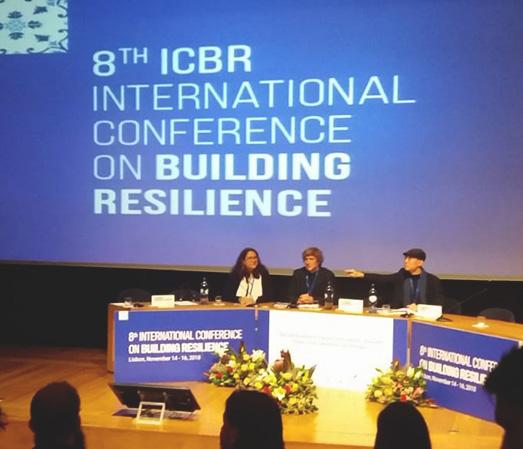
CARMEN MENDOZA
Carmen Mendoza analyses the challenges of humanitarian architecture in Lisbon
Carmen Mendoza-Arroyo took part in the 8th International Conference on Building Resilience held in Lisbon. Mendoza presented a paper entitled “Creating social and spatial integration frameworks: overcoming the emergency approach to urban refugee reception models” in which she presented new approaches to integrate refugees in cities. “The refugee camp model is unsustainable and, when implemented, it calls into question whether architects and designers are not only helping perpetuate their state of emergency, but also abetting governments and the policies keeping them in power,” she explained. Mendoza also served as a member of the jury of the first edition of the Marielle Franco CommunityDesign Award, whose winner was announced during the conference. The award aims to recognise the daily work of architects working in marginal neighbourhoods or disadvantaged areas. The award is named after the Brazilian sociologist and politician, Marielle Franco, recently killed on the streets of Rio de Janeiro for her activism to help the lower income population in Brazil.

GUILLEM CARABÍ
Guillem Carabí takes part in the lecture series on Josep M. Jujol in Els Pallaresos (Tarragona) Lecturer Guillem Carabí took part in the lecture series titled “Jujol Year 140/70: Jujol and His Mark on the Tarragona Region”, organised by the Trencadís Foundation in cooperation with Tarragona City Council.
Carabí’s presentation, which took place in the Jujol Centre in the town of Els Pallaresos and was entitled “Casa Bofarull”, gave an in-depth analysis of the 30-year renovation project (1913-1933) carried out by the Tarragona-native architect Josep Maria Jujol on this old 16thcentury farmhouse. According to the lecturer at UIC Barcelona, “Jujol’s project singles out the home vertically and develops it horizontally. A double motion that intimates the surrounding landscape and provides geometry, colour and textures, inverting the natural behaviour of the materials”.
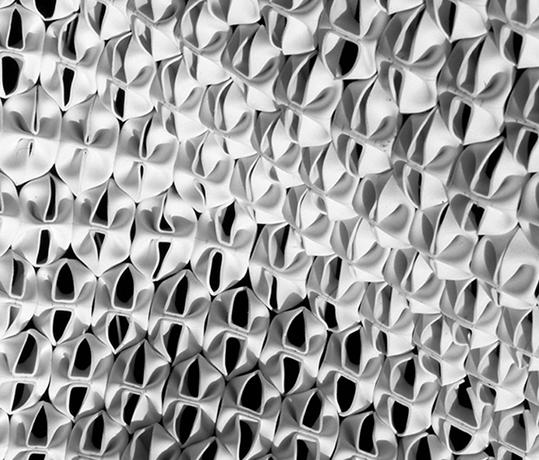
A. T. ESTÉVEZ, K. CHU & P. BAQUERO
Teaching staff from the Master’s Degree in Biodigital Architecture, Alberto T. Estévez, Karl Chu and Pablo Baquero, help organise a congress in Qatar Pablo Baquero, lecturer at the UIC Barcelona School of Architecture’s Master’s Degree in Biodigital Architecture, was one of the organising members of the international congress Game, Set & Match IV Qatar (GSM4Q). In addition, the director of the master’s degree, Alberto T. Estévez, and another lecturer, Karl Chu, were also appointed members of the conference’s scientific committee. The event was organised by Qatar University and the Qatar National Research Foundation.
The 4th edition of this international congress was held under the title “Connecting People, Spaces and Machines: The Informed Nomadic Monad” and will address a number of specific yet closely related subjects, such as distributed climates, robotic buildings, informed materials and smart environments, among other things. All these fields of knowledge tie into the research lines explored by the Genetic Architectures Research Group, which Alberto T. Estévez himself directs at the UIC Barcelona School of Architecture.
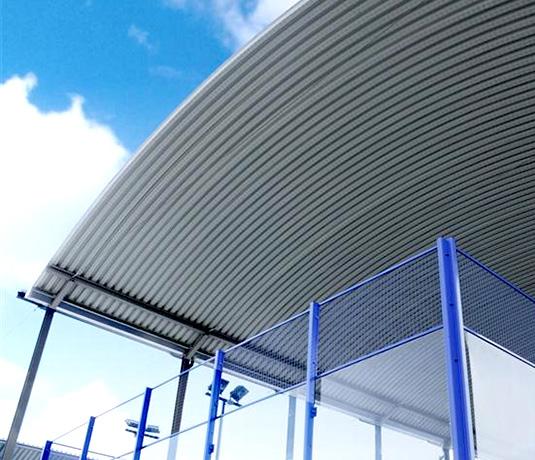
PEDRO CASARIEGO
Pedro Casariego publishes two articles in Thin Walled Structures, a first quartile journal according to JCR The assistant director of Academic Affairs and Teaching Staff at the UIC Barcelona School of Architecture, Pedro Casariego, recently published two articles in the journal Thin Walled Structures, ranked in the first quartile by Journal Citation Report (JCR), entitled “Analytical study of flat and curved trapezoidal cold formed steel sheets by means of the Yield Line Theory. Part 1: Flat sheets without transverse corrugations” and “Part 2: Curved sheets with transverse corrugations”. The object of study is selfsupporting arches made by press-forming cold formed steel trapezoidal sheeting. These arches, which are self-supporting, are produced by press-forming commercial steel deck profiles into curved panels, creating a structural arch. Once the panel has been produced, it is brought to the construction site, where it is installed directly onto the structure’s main beams. These arches are highly competitive, as they are thin, with a thickness of between 0.6 and 1.2 mm, yet can span distances of up to 9 metres without the need for joists.

ENRIQUE ROVIRA-BELETA
Enrique Rovira-Beleta contributes to the White Book on Sports for Disabled People in Spain Enrique Rovira-Beleta, director of the Postgraduate Degree in Accessibility and Design for All, recently published the chapter “Accesibilidad en la práctica deportiva de las personas con discapacidad: diagnóstico” (Access to Sports for People with Disabilities: Diagnosis). This publication takes a comprehensive look at the baseline situation and proposes ways, in the form of policies and public strategies, to improve the access, extension and enjoyment of sport as a social asset for all people. The chapter authored by Rovira-Beleta talks about the requirements that should be taken into account when designing sports facilities and the most common difficulties faced by the elderly and/or people with disabilities when accessing or engaging in sport. It identifies the different dimensions for people in manual, motorised and sports wheelchairs, as well as the needs of people with sensory (sight and/or hearing) and cognitive (intellectual and/or mental) disabilities.
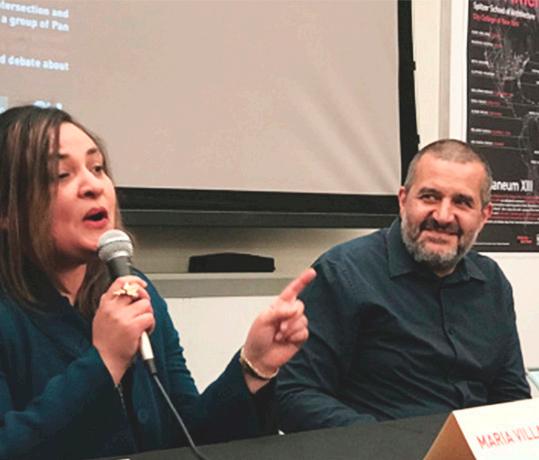
FREDY MASSAD
Fredy Massad analyses the impact of populism on media strategies in architecture while in New York
Fredy Massad, lecturer on Architectural Theory at the UIC Barcelona School of Architecture, participated in the Mundaneum XII 2019: Pan Americas conference. The conference was held in the Spitzer School of Architecture at City College in New York. Massad gave a talk entitled: “The Populist Effect: Post-Truth Architecture”, in which he analysed the impact of neo-populism at a global scale on media strategies in architecture from a critical point of view, as well as the consequences this has in terms of thought. During his talk, Fredy Massad also underlined the need to reinforce the professional role of the architectural critic, an idea which he presented in his essay entitled ‘Crítica de choque’ (Shock criticism), recently published in Spain by Qut Ediciones. “The essential message of my talk is to defend the need to establish individual and rigorous criteria for reflection on architecture. Based on this criterion it is possible to achieve a critical and responsible position that strongly challenges ‘like’ and ‘influencer’ culture and neo-populist narratives” said the lecturer.
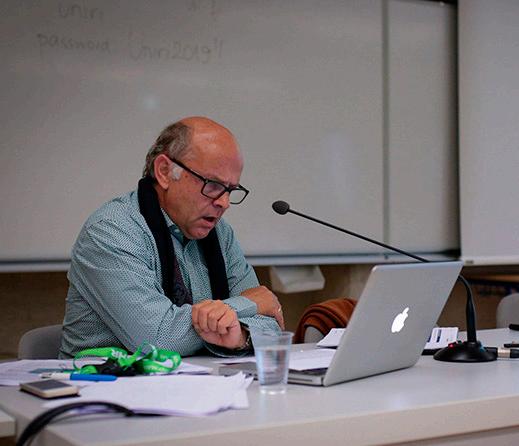
ALFONS PUIGARNAU
Alfons Puigarnau presents the influence of Nietzsche’s philosophy on the Mnemosyne Atlas by Aby Warburg in Croatia The UIC Barcelona School of Architecture lecturer on Critical Thinking and Aesthetics, Alfons Puigarnau, participated in the 13th International Conference of Iconographic Studies organised by the University of Rijeka (Croatia) together with the universities of Macerata (Italy), Sapienza (Italy) and Split (Croatia). Alfons Puigarnau presented a talk called “Aby Warburg and the Nietzsche effect”, where he delved into the influence that the German philosopher’s theories had on the work of Aby Warburg, founder of the Kulturwischenschafte Bibliotek, in London today. The UIC Barcelona lecturer therefore analysed the famous Mnemosyne Atlas, the key artistic historiography work that was the focus of Warburg’s final years and that continues to be controversial today, because of the complex iconographic analogies that the German historian outlined at the beginning of the last century. Puigarnau also took a closer look at the different interpretations that Nietzsche and Warburg had on the concept of the “future life of Antiquity”.
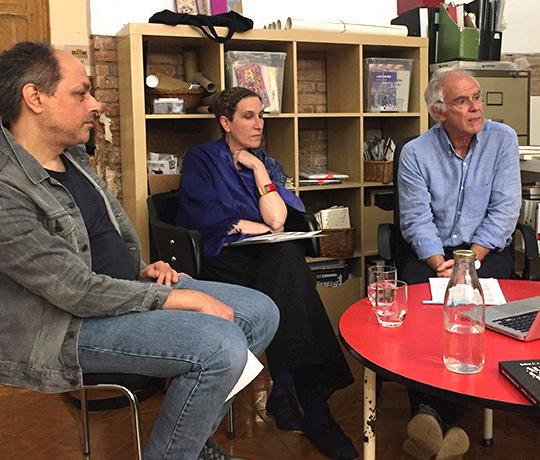
KATHRIN GOLDA-PONGRATZ
Professor Kathrin GoldaPongratz wins 2019 FAD Architecture Award
The UIC Barcelona School of Architecture lecturer Kathrin Golda-Pongratz received a 2019 FAD Award in the category of Thought and Criticism for her work as the co-author and coeditor (alongside José Luis Oyon and Volker Zimmermann) of the book ‘Autoconstrucción. Por una autonomía del habitar. Escritos sobre vivienda, urbanismo, autogestión y holismo’ (Selfbuilding: Towards autonomy in housing. Writings on housing, urban planning, self-management and holism), published by Pepitas de Calabaza.
The volume contains selected works by the English architect John F. C. Turner (1927) and seeks to offer Spanish-speaking readers a window into hitherto little known aspects of his life and career, such as his reports for international agencies, articles in the political press and previously unpublished thoughts about the construction of place and the social processes behind the selfbuilding of housing around the world.

STUDY
A study involving UIC Barcelona provides the framework for assessing the integration of climate change mitigation and adaptation into cities Furthering the integration of climate change mitigation and adaptation policies is one of the major challenges currently facing cities when it comes to developing climate action plans. Lorenzo Chelleri, lecturer at the UIC Barcelona School of Architecture, recently published a paper titled “Analytical framework to evaluate the level of integration of climate adaptation and mitigation in cities” in the prestigious journal Climate Change, alongside four other international researchers.
After two years of research, the study presents an assessment framework that makes it possible to analyse the level of integration of the mitigation and adaptation policies laid out in cities’ local climate action plans. Recent studies show that a lack of synergies between these two policy areas –mitigation and adaptation– can undermine urban planning, prompting conflicts between objectives and lost opportunities in the struggle against climate change.

STUDY
A UIC Barcelona study highlights the use of evolutionary computation to improve the urban fabric
The UIC Barcelona School of Architecture lecturers Ana Cocho-Bermejo and Diego Navarro recently published the study “Urban-Tissue Optimization through Evolutionary Computation” in the top-quartile journal Mathematics, indexed by Journal Citation Reports Science Edition. Mohammed Makki, a researcher at the Architectural Association of London, also participated in the research. In their paper, the lecturers propose using multi-objective genetic algorithms to analyse the master plan of Barcelona’s Eixample district in order to achieve a more heterogeneous and flexible urban fabric. “The use of computation facilitates the solution of complex problems, such as architectural or urban design”, the authors explained. “In fact, the range of possible solutions is apparent in the conflict of the city’s design, the contradictory objectives that make it up and that require us to position ourselves with regard to the city we love.”
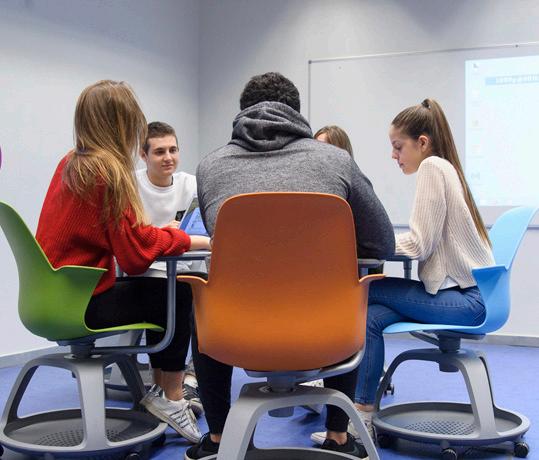
GRANT
The Teaching Innovation Classroom awards innovation in the classroom
Three different lecturers from different faculties received financial aid from the Teaching Innovation Classroom in order to carry out the innovative initiatives they had put forward in the classroom.
One of the main objectives of the Teaching Innovation Classroom at UIC Barcelona is to promote lecturers’ initiatives so they can implement innovative proposals that help towards improved teaching and student performance. In that sense, for the first time the Classroom has awarded financial aid to promote the aforementioned initiatives. The following professors and departments were awarded: Dr Mireia Hoyos, from the Department of Basic Sciences in the Faculty of Medicine and Basic Sciences; Dr Diego Navarro, from the UIC Barcelona School of Architecture; and Dr Olatz Larrea, from the Faculty of Communication Sciences.
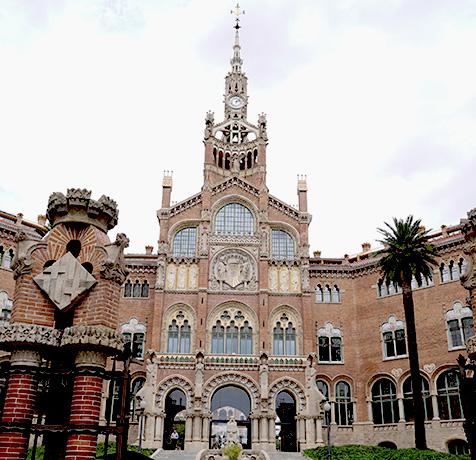
NEW MASTER’S DEGREE
First edition of the International Master’s Degree in City Resilience Design and Management The inaugural session of the first edition of the International Master’s Degree in City Resilience Design and Management run by UIC Barcelona School of Architecture and the Urban Resilience Research Network (URNet) took place on 1 October. The ceremony was held in the morning at the UN-Habitat offices (one of the international partners of the master’s degree), located in the modernist building of the former Sant Pau hospital. Lorenzo Chelleri, director of the programme, welcomed the first intake of students coming from countries like France, Italy, the United States, Mexico, Costa Rica and Namibia. Rosa Suriñach, Partnerships, Advocacy and Outreach Coordinator at the organisation’s Barcelona offices, spoke on behalf of UN-Habitat: “UN-Habitat works in close partnership with UIC Barcelona and the Urban Resilience Research Network”.
The new Master’s Degree in City Resilience Design and Management is an educational programme developed by the Urban Resilience Research Network (URNet). This is the imost prestigious international research network on urban resilience with the highest level of impact on a global scale. The programme has a strong international focus, is multidisciplinary and is mainly aimed at students and city practitioners interested in learning governance models and management tools appropriate to integrating sustainability and urban resilience while contributing to the hard task of implementing the United Nations’ sustainable development goals.
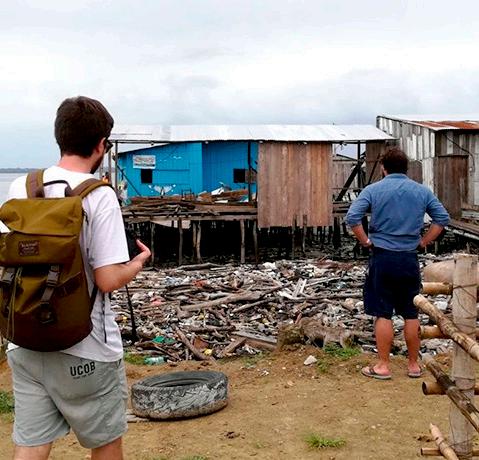
UNIVERSITY MASTER’S DEGREE RANKING
The UIC Barcelona School of Architecture’s Master’s Degree in International Cooperation climbs to second in the Ranking of University Master’s Degrees by the newspaper El Mundo For the fourth straight year, the UIC Barcelona School of Architecture has claimed a position in the ranking of the Best Spanish University Master’s Degrees for 2019, created by the newspaper El Mundo. More specifically, the School ranks second in the category of Design and Architecture with the Master’s Degree in International Cooperation: Sustainable Emergency Architecture, which has climbed one position over the previous year and continues in the top 5. According to El Mundo, one of the most outstanding aspects of this master’s programme are the field trips the students go on each year to different parts of the world, normally underdeveloped regions, to cooperate on an existing project for a certain period of time. According to Carmen Mendoza, “This new position as the second best master’s degree in the category of Design and Architecture recognises the excellent level of not only our national and international teaching staff, but also the programme’s coordinators and content. It also acknowledges a master’s degree that looks beyond the conventional topics of architecture and, through design, strives to exalt its social and service-oriented aspects in complex contemporary settings, which for me is an incentive”.









